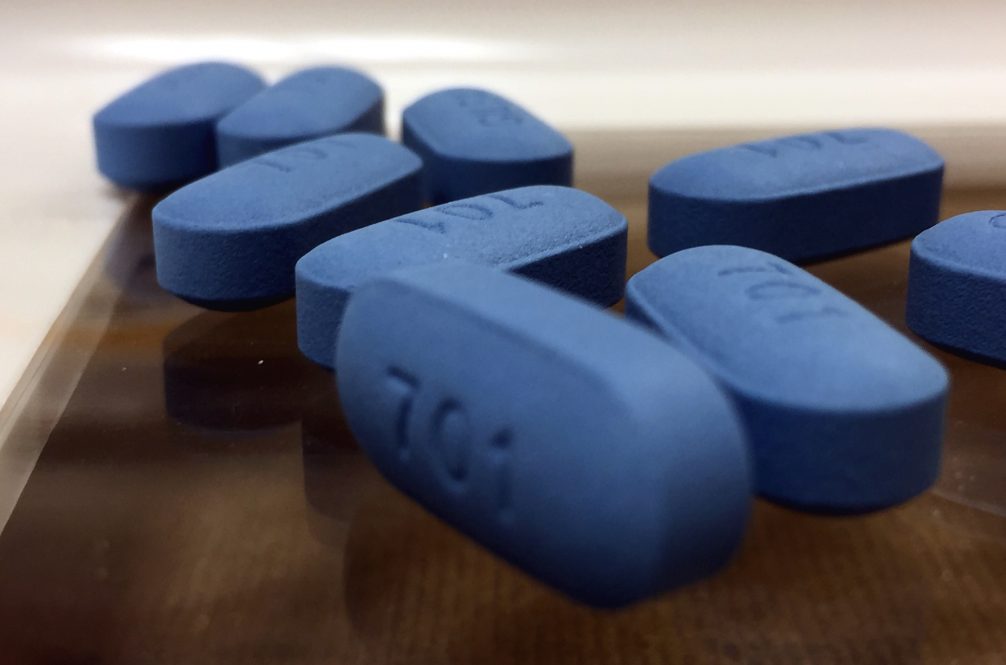Michael Copenhaver, a professor in the Department of Allied Health Sciences (College of Agriculture, Health and Natural Resources) is working on a $2.8 million grant from the National Institute of Drug Abuse to improve intervention outcomes for people who use drugs and are at high risk for HIV infection.
Since 1999, the number of opioid overdose deaths in the U.S. has increased six-fold, killing 450,000 people in the past 20 years. With this trend, the number of HIV infections among people who inject drugs have also increased.
Copenhaver has been working with the population of people who inject drugs for decades. At one point, he noticed that as many as two-thirds of these patients had some level of cognitive impairment. This led Copenhaver and his collaborators to ask if there was a way to tailor their interventions to make them more effective for this population.
In this new trial, they will use adaptation strategies developed for other cognitively impaired patient populations, like people with traumatic brain injuries, Alzheimer’s disease, and older adults. The intervention will target the reduction of risky sex- and drug-related behaviors (like having unprotected sex or sharing needles), and adherence to pre-exposure prophylaxis (PrEP). PrEP, when taken daily, provides protection from contracting HIV.
“What we’re doing is trying to see if those successful tools from other patient populations can be applied to ours,” Copenhaver says.
Copenhaver and his team will test accommodation strategies for four different cognitive domains: attention, using strategies like increasing the frequency and decreasing the length of sessions; executive function, helping patients anticipate and role play risky situations; memory, using text message reminders between sessions about upcoming appointments and summarizing key content; and information processing, by presenting content more slowly and with mixed presentation methods of visual, verbal, and hands-on learning.
“These are little tools that, when combined, we think will help them to benefit more rather than just assuming they’re getting every single thing that we’re presenting in these groups,” Copenhaver says.
Copenhaver will use an innovative methodological approach known as a multiphase optimization strategy (MOST), with consultation from Linda Collins, an NYU professor of global public health. This means participants will all receive basic group informational sessions, which Copenhaver has previously tested and found to be effective. But then, the researchers will try combinations of accommodation strategies, for a total of 16 experimental unique conditions.
“At the end of it, you’re able to say not only whether these accommodation strategies work, but which combination of strategies works the best for helping patients reduce HIV risk and adhere to medications,” Copenhaver says.
David Vanness (Pennsylvania State University) will help the team determine not only which combinations work best, but which would be the most cost effective for a clinic to implement.
Before the trial begins, the researchers will ask participants about their sex- and drug-related risk behaviors.
“It’s a whole network, a high-risk network of interactions they’re involved in a lot of times,” Copenhaver says. “And that’s why it’s so important if we can get them to take pre-exposure prophylaxis, because that can stop [them from] contracting HIV and transmitting it. It can be a really important turn in the field for slowing down the spread of HIV.”
They will also assess if participants know how to use a condom and clean needles properly.
After the four-week intervention period, the researchers will follow-up with participants after three, six, and nine months. During these follow-ups, they will ask if their engagement in risky behaviors has changed and check their PrEP adherence through interviews, blood tests, and pharmacy refill records.
The team will recruit 256 participants from an opioid treatment clinic in New Haven. Importantly, the group will only recruit patients with cognitive impairment who are new to opioid replacement therapy.“The reason we’re so interested in this segment of the population is because they happen to be much more risky overall, because they’re less stable and they’re still engaged in a lot of very high-risk behavior out there,” Copenhaver says. “And if we can capture that segment of the patient population, we’ll be contributing much more to slowing down the spread of HIV than people who are already engaged and stable in treatment.”



